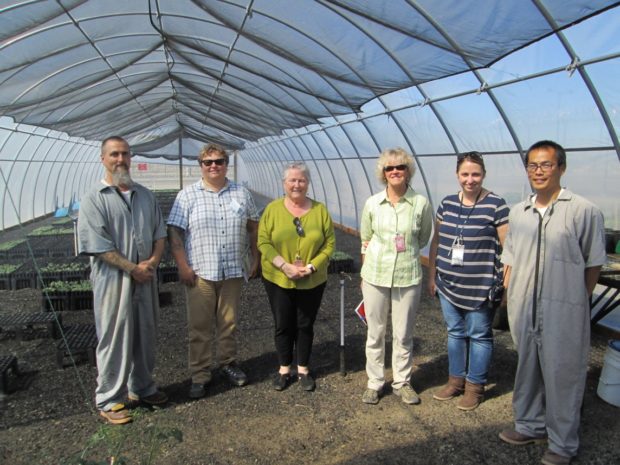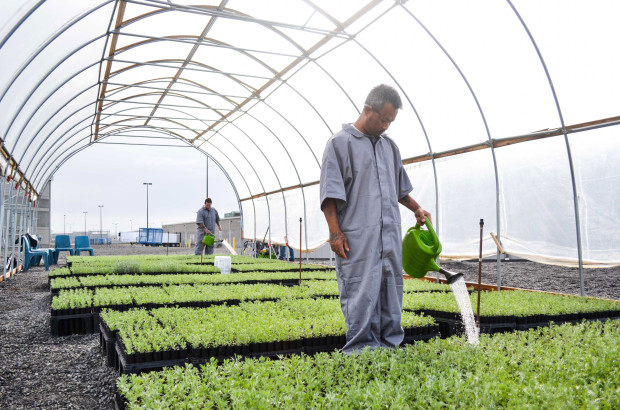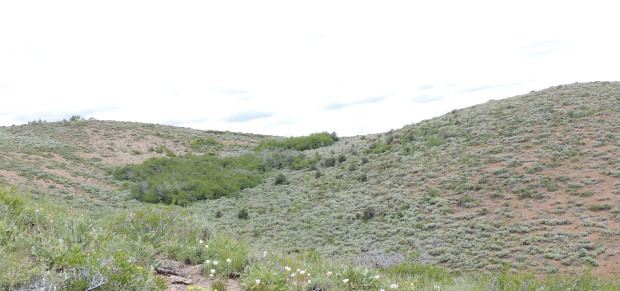by Gretchen Graber, native plant grower and educator, Institute for Applied Ecology

Sagebrush nursery partners stand together in the hoop house. From left to right, they are Mr. Bowen, Ms. Graber, Ms. Olwell, Ms. Erickson, Mrs. Trainer and Mr. Le. Photo by Washington DOC staff.
The iconic greater sage-grouse, a species recently considered for endangered species listing, is getting a helping hand from a unique set of partners: Bureau of Land Management (BLM), Institute for Applied Ecology (IAE), and Sustainability in Prison’s Project (SPP).
Peggy Olwell, the National Plant Materials Program Lead, BLM-Washington D.C. and Vicky Erickson, geneticist for the U.S. Forest Service, Pacific Region visited the “Sagebrush in Prisons Project,” at Coyote Ridge Corrections Center in Connell, WA, on June 3rd. BLM is sponsoring the program propagating 43,300 Wyoming Big Sage and Three-tip sagebrush, plants that will be carefully nurtured over the summer months and planted out in burned shrub-steppe habitat managed by BLM, this November in Douglas County, WA.

Conservation technicians tend to the growing sagebrush in the nursery at CRCC. Photo by Meagan Murray.
The tour was given by Sam Harris and Dorothy Trainer of Washington Department of Corrections (DOC) and Gretchen Graber, native plant grower and educator with IAE. Olwell and Erickson were able to witness the intangible benefits of the program while meeting the inmates and supporting DOC staff that are growing the sagebrush. “Community is being created within DOC as a result of the project,” said Mr. Harris. “Coyote Ridge staff have excelled at managing the new program and special thanks goes to Dorothy Trainer and Sam Harris for their intelligent management of the program,” said Graber.

This is an example of healthy sagebrush landscape in central Oregon. Photo by Joseph Weldon, Wildlife Biologist, BLM.
Areas where the sagebrush will be planted are occupied by greater sage-grouse, the species targeted for population increase and recovery. The partnership among BLM, Washington DOC, IAE is part of an unprecedented effort to prevent endangered species listing of the grouse.
Greater sage-grouse are unique from other grouse species in not having a muscular crop used for digesting hard seeds. They forage on sagebrush leaves, herbaceous perennials and insects. Planting genetically appropriate sagebrush species from locally derived genetic sources provides important food and crucial habitat for the birds.
Olwell and Erickson also viewed a living quarters unit, met and talked with several dog training inmates and petted a puppy during their tour at CRCC. “Here’s to a positive future for the greater sage-grouse and to more sagebrush,” commented Olwell.